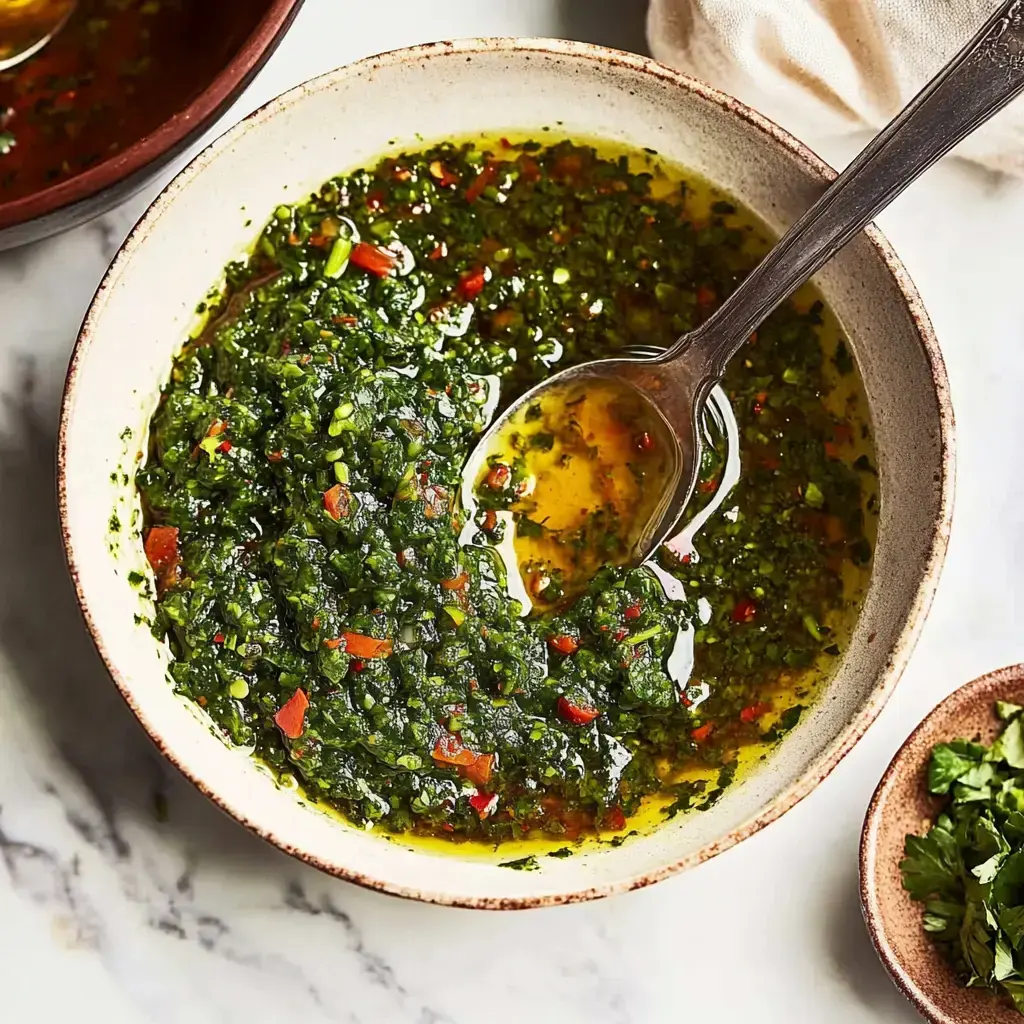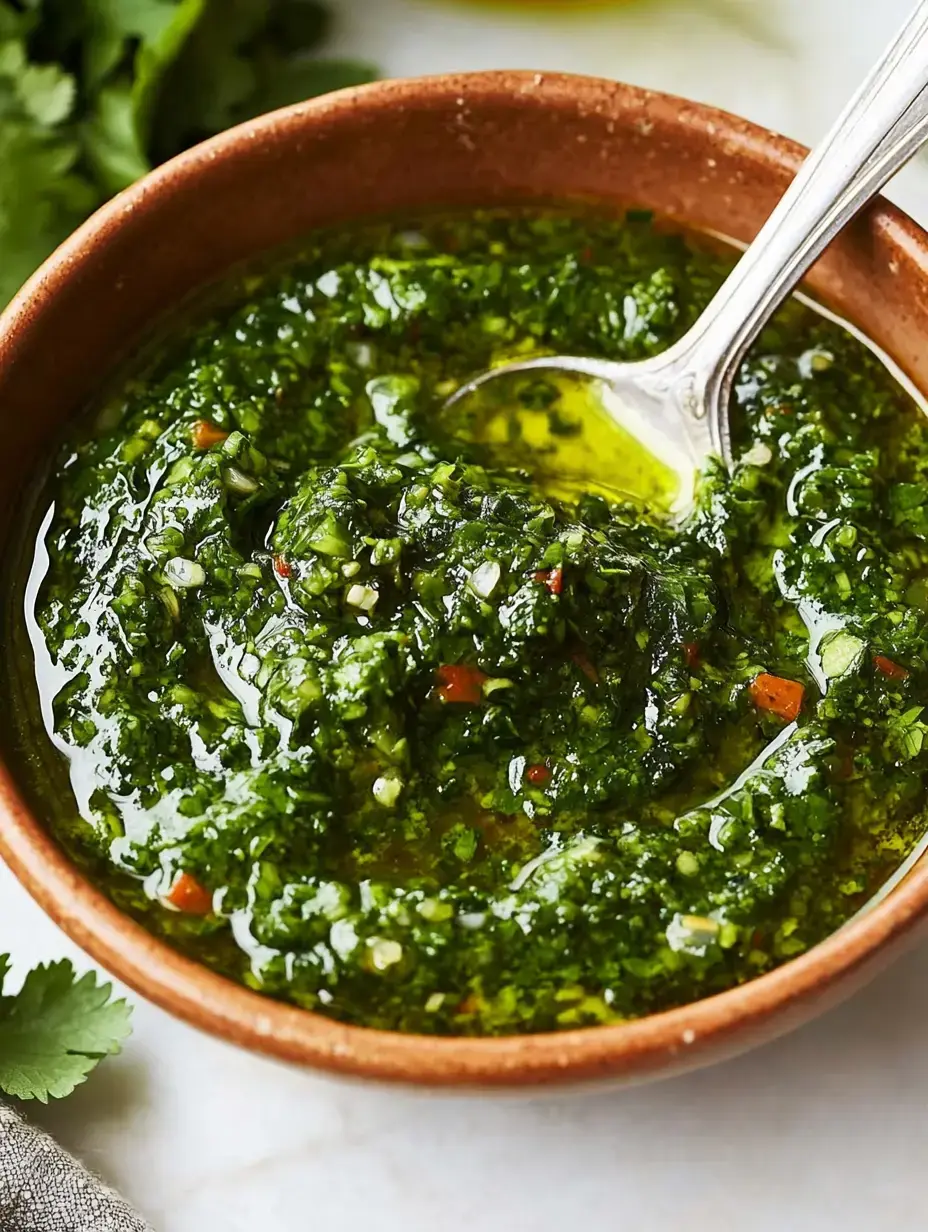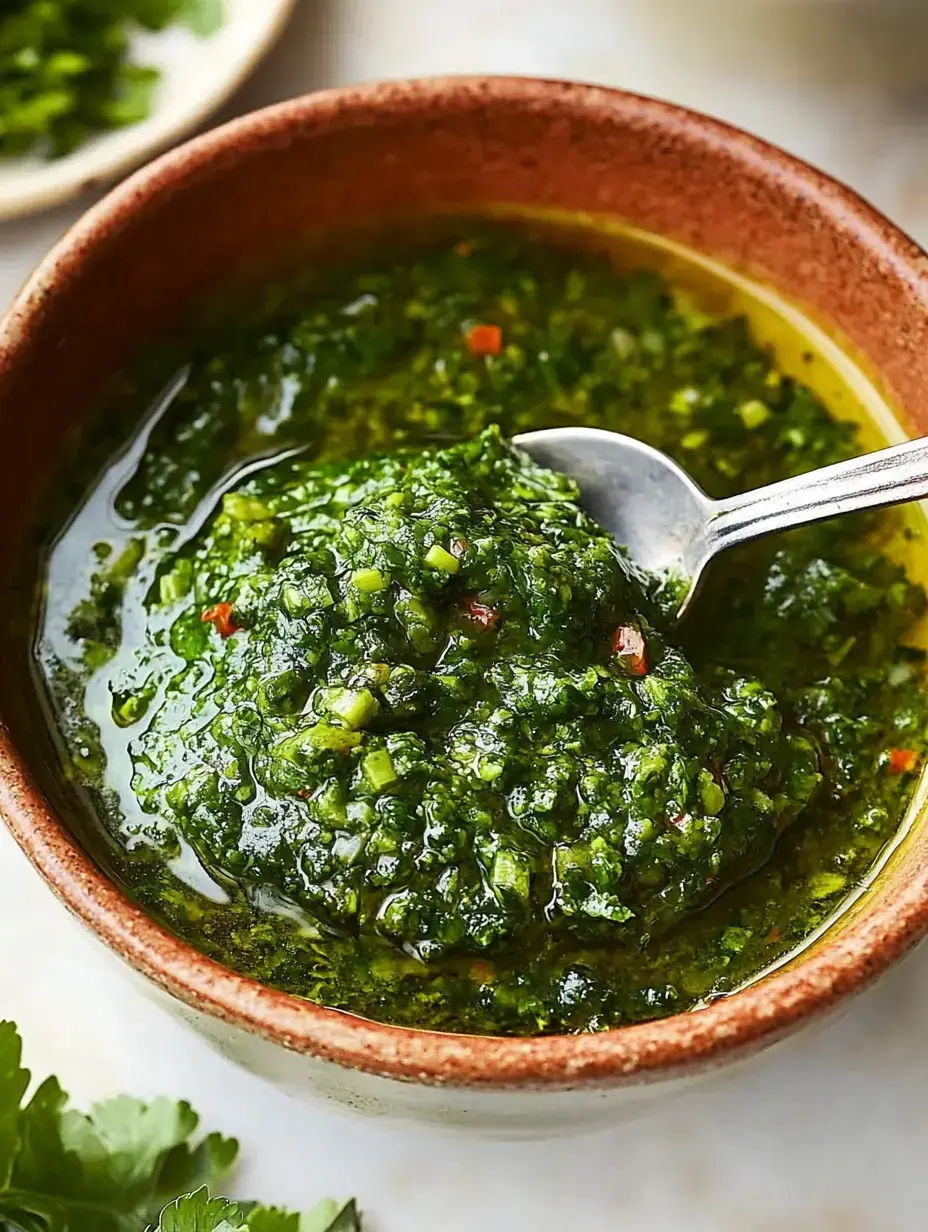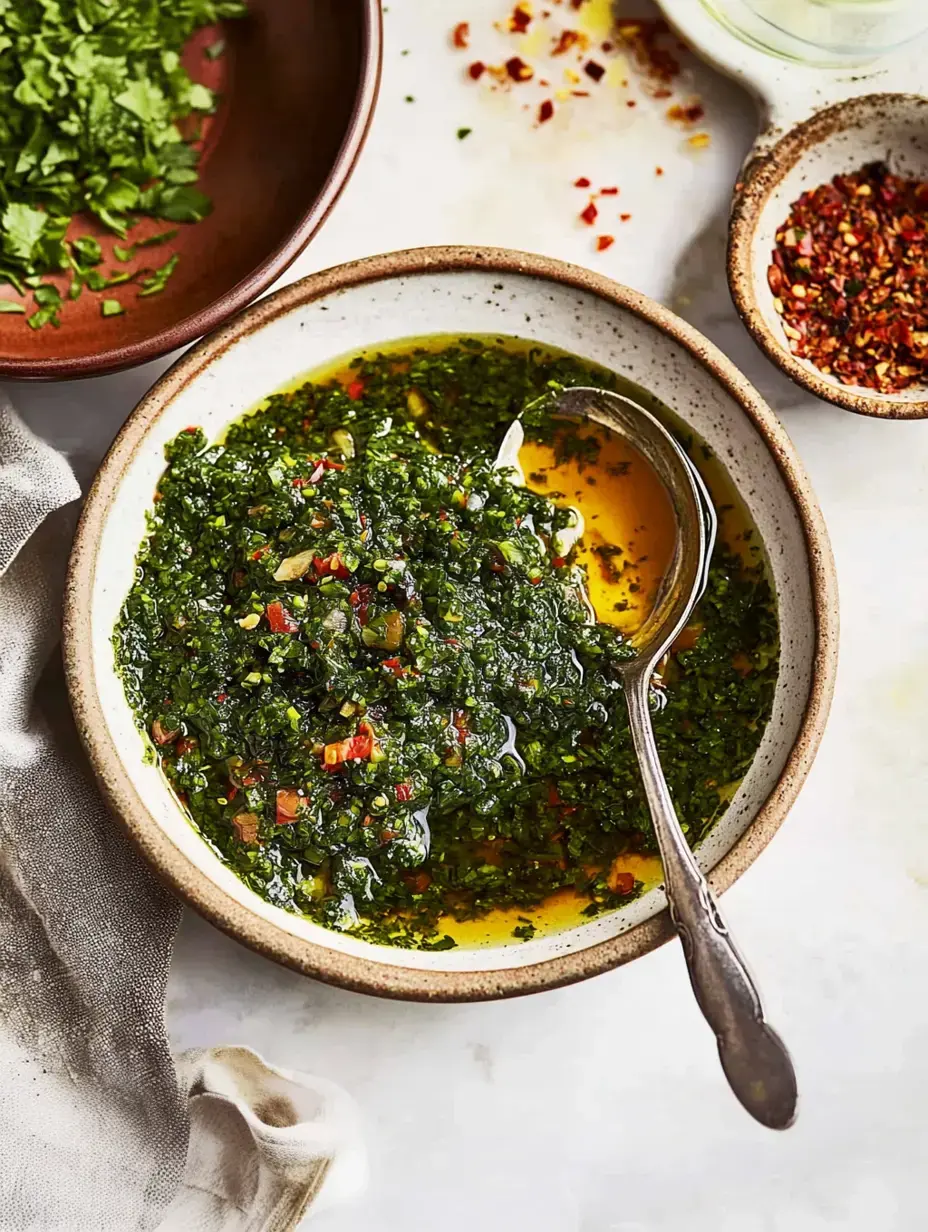 Pin it
Pin it
I've gotta share this mind-blowing sauce that turns ordinary meals into something extraordinary. Through countless kitchen experiments over the years, I've nailed down this zingy, green Argentinian masterpiece that blends leafy parsley, bold garlic, smooth olive oil and zesty vinegar. Though traditionally spooned over grilled steaks, I'm amazed at how flexible it is - splash it on baked veggies, mix it into legumes, or add it anywhere you need a pop of garden-fresh zing.
Prepping Your Components
The backbone of chimichurri is beautiful fresh parsley - it's truly the cornerstone of our sauce. You'll need several garlic cloves too, adding amazing flavor depth. Premium olive oil ties everything together while white wine vinegar delivers that zippy tang. I can't go without dried oregano for its fantastic earthy notes, chili flakes for a mild kick, and a bit of smoked paprika for that gentle smoky taste. And salt is crucial - it brings out all these amazing flavors.
Whipping Up Your Mixture
Putting chimichurri together is super easy but there's a knack to making it perfect. Mix your oil, vinegar, garlic and spices together first until they're well blended. Then comes the fun bit - folding in those bright green chopped parsley leaves. Don't rush tasting and tweaking the seasonings. You'll notice the flavors getting richer as they hang out together.
How To Enjoy Your Creation
This sauce goes with practically everything. Try it as a flavorful marinade for beef, letting all those herbs work their magic. It works wonders poured over oven-roasted veggies for extra color and freshness. Mix it into cooked grains for an instant flavor boost. I sometimes use it to dress fresh greens. And my top choice - pouring it over steaming baked spuds, watching that beautiful green liquid seep into every nook.
 Pin it
Pin it
Maintaining Freshness
Though chimichurri is most delicious right away, you can keep it in a sealed container in your fridge up to 4 days. Here's my favorite hack - scoop portions into ice cube trays and stick them in the freezer for up to 3 months. Whenever you want some, just grab a cube and let it soften. You'll be surprised how well the taste holds up.
Custom Variations
The classic recipe is great but I love tweaking it sometimes. I'll often swap out half the parsley for cilantro, completely changing its character. When I want more kick, I'll throw in extra chili flakes or a fresh pepper. For a sunny twist, try swapping the vinegar for lemon or lime juice. Each change adds something new to your food.
Pro Secrets
I've made this sauce hundreds of times and picked up some crucial tricks. Don't use a food processor - cut your herbs by hand for much better texture. Only use fresh herbs for vibrant flavor. Always taste as you go and adjust until it hits your personal sweet spot. And if you can wait, let it sit for a couple hours before using - the taste gets even better with time.
Ideal Companions
Let me tell you what foods this sauce loves. It's incredibly tasty with any barbecued meat, particularly beef, poultry or sheep. Grilled produce like green spears, summer squash or sweet peppers taste amazing with a generous splash. A spoonful livens up basic grain bowls and transforms ordinary salads. I use it to make everyday dishes feel fancy.
 Pin it
Pin it
Nutritional Perks
Another thing I dig about chimichurri is how it packs tons of taste while staying pretty wholesome. It's naturally light on calories but loaded with good stuff from the parsley and garlic. The olive oil gives you beneficial fats and since we're using basic fresh stuff, it's naturally gluten-free and works for plant-based diets.
Cultural Roots
When I stir up chimichurri, I can't help thinking about its heritage in Argentina and Uruguay, where folks have been slathering it on barbecued meats forever. This bold herby flavor has traveled well beyond its birthplace, becoming a kitchen must-have around the world.
Keeping It Fresh
Your sauce will stay tasty in the refrigerator for roughly 4 days. For longer storage, try my freezer method - divide it into tiny containers or those handy ice cube trays and it'll be ready whenever you need to add some zip to your cooking.
 Pin it
Pin it
Basic Tools Needed
You don't need fancy gadgets for stellar chimichurri. A good knife matters most for chopping herbs properly. Find a decent mixing container and whisk for smooth blending. And if you plan to save portions, those ice cube trays come in super handy for small servings.
FAQs Answered
I'll tackle the stuff people ask me most about this sauce. While you could use a blender, I really suggest hand-chopping for the best feel in your mouth. Fresh parsley is a must - the dried stuff just won't cut it for real flavor. And yep, you can definitely crank up the heat by adding more peppers or chili flakes to match your taste.
Similar World Flavors
It's cool how many cultures have their own takes on herb-based sauces like chimichurri. From Italy's gremolata to Mexico's salsa verde, these bright mixtures prove that combining fresh herbs with quality oil is a flavor language everyone understands.
 Pin it
Pin it
Quality Matters
I can't say enough about using truly fresh parsley in this mix. That vivid green color, those soft leaves full of natural oils - they build the base of an amazing chimichurri. Take your time picking bright, fresh bunches and your sauce will taste so much better.
Share Your Creations
What makes me smile most is seeing how you use this sauce in your own home. After making your chimichurri, take a picture and show us your work. I'm always thrilled to see all the inventive ways folks use this versatile mixture in their cooking.
Perfect Occasions
Chimichurri works great at outdoor cookouts adding brightness to grilled foods. It turns basic family meals into something memorable. Keep a batch ready for quick weekday dinners and save some for those fancy get-togethers when you want your guests to be impressed.
Frequently Asked Questions
- → What's the shelf life of this sauce?
- Freeze leftover chimichurri in ice trays. Let it defrost at room temp before using.
- → What foods pair well with it?
- Drizzle it over roasted veggies, use it in salads, mix with grains, or spoon it on grilled meats.
- → Do I need special tools to make it?
- You can use a food processor, a mortar and pestle, or just a whisk and a bowl for mixing.
- → Do you include parsley stems?
- Chop up the tender parsley stems and leaves but skip the thicker, harder stems.
- → Is the spice adjustable?
- Absolutely! Dial up or down the red pepper flakes to make it as spicy as you like.
